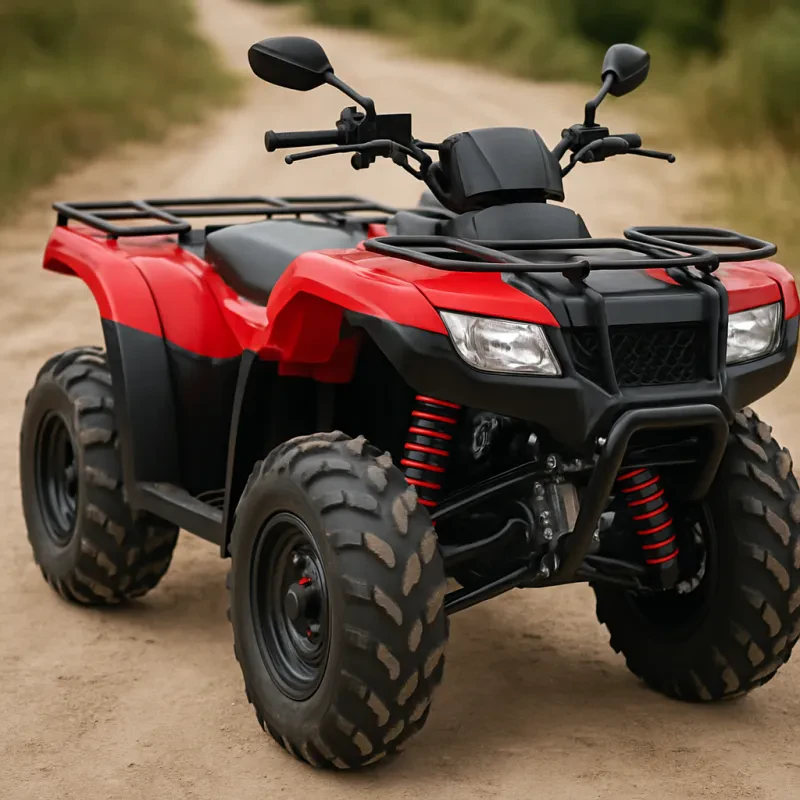When it comes to mastering ATV suspension adjustment, it’s essential to understand the basics of how your suspension system works. The suspension on your ATV plays a crucial role in providing a smooth ride while also ensuring that you have control over your vehicle, especially on rough terrains. With the right adjustments, you can improve the handling and comfort of your ATV significantly.
At its core, ATV suspension consists of components such as shocks, springs, and linkages. The shocks absorb the impact from bumps and obstacles, while the springs support the weight of the ATV and its rider. Understanding the interaction between these elements is vital for effective ATV suspension adjustment. You want to ensure that your shocks are properly compressed and your springs are set to the right tension to suit your weight and riding style.
Different types of terrain require different suspension settings. For example, if you’re riding on rocky trails, you may want a stiffer setup to prevent bottoming out. On the other hand, if you're traversing through softer, muddy areas, you might prefer a softer suspension to soak up the bumps and ensure better traction. Experimenting with your ATV suspension adjustment based on the terrain will help you find the perfect balance for a more enjoyable ride.
Don’t forget that regular maintenance is critical too. Over time, suspension components can wear out or lose their effectiveness. Regular checks and adjustments can ensure that everything remains in top shape. Familiarizing yourself with your ATV’s suspension settings and making small tweaks can significantly enhance your overall riding experience.
Tools You Need for Adjustment
When it comes to achieving the perfect ride on your ATV, understanding the tools needed for ATV Suspension Adjustment is essential. The right tools not only make the adjustment process easier but also ensure that you achieve the desired riding experience. Here’s a handy list to help you gather what you need.
First on the list is a basic set of hand tools. Socket wrenches and screwdrivers are essential for loosening and tightening bolts on your ATV’s suspension components. You may also need a torque wrench to ensure that you are tightening bolts to the manufacturer’s specifications. This helps maintain the integrity of your suspension system and prevents unwanted wear and tear.
Next, consider getting a suspension tuning kit. These kits typically include a variety of adjustment tools specifically designed for suspension setup, including preload adjusters and clicker tools for damping adjustments. Having these tools will allow you to make precise changes, tailoring your ATV Suspension Adjustment to your riding style and the terrain you’ll encounter.
Another useful item is a measuring tape or a ride height gauge. Measuring your ATV’s sag is crucial for making accurate adjustments. Knowing the correct sag percentage for your specific vehicle can greatly enhance performance and comfort while riding. Additionally, a notepad or a mobile app can be beneficial for taking notes on your adjustments and noting how they affect your ride.
Step-by-Step Adjustment Guide
Adjusting your ATV suspension can seem daunting, but with our simple step-by-step guide, you'll be on your way to a smoother ride in no time. First, it's essential to familiarize yourself with the different types of suspension adjustments available on your ATV. These include preload, compression, and rebound settings. Each of these adjustments has a specific purpose and can significantly influence your riding experience.
Begin with the preload adjustment. This controls the amount of sag your suspension has before the rider's weight is applied. To adjust the preload, locate the adjuster rings on your shock absorbers. Clockwise turns will increase preload, raising the ATV's height and increasing stiffness. Conversely, turning it counterclockwise will decrease preload, giving you a lower ride height and a softer feel. Aim for around 25-30% of the total shock stroke to achieve the correct sag.
Next, focus on the compression settings. This adjustment determines how quickly the suspension will compress when hitting bumps or obstacles. To adjust compression, turn the adjuster knob or dial on your shock absorber. For smoother rides over rough terrain, decrease the compression damping by turning it counterclockwise. If you prefer a firmer ride, increase compression by turning it clockwise. Test the adjustments by riding on different terrains to find your ideal setting.
Finally, set the rebound adjustment. This controls how quickly the suspension returns to its original position after being compressed. If your ATV feels bouncy after hitting bumps, you may need to increase the rebound damping by turning the adjuster clockwise. For a more stable ride, consider decreasing the rebound by turning it counterclockwise. Again, test these settings while riding to determine what feels best for you.
Testing Your New Suspension Setup
Once you've decided on your new suspension setup, it's time to put it to the test. Testing your new suspension is a critical step in the ATV suspension adjustment process to ensure it performs optimally. Start by choosing a suitable trail or terrain where you can evaluate how your ATV responds to bumps, dips, and sharp turns. Take note of how the suspension handles these obstacles to determine if further adjustments are necessary.
As you ride, pay attention to the feel of your ATV. Does it absorb shocks well, or do you feel every bump? A properly adjusted suspension should provide a smooth ride while still maintaining control. If you find the ride too bouncy, consider tightening the suspension settings. Conversely, if the ride feels too harsh or you bottom out, try loosening the settings. Remember, ATV suspension adjustment is all about finding that sweet spot!
Additionally, it’s helpful to ride with a buddy who can observe your ATV's performance from a different perspective. They can offer insights into how the suspension looks as you tackle different terrains. Keep a notepad handy to record feedback and iterations as you fine-tune your setup. Each adjustment can lead to significantly different riding experiences, and keeping track will help you pinpoint what works best for your ATV and riding style.
Finally, be patient through this process. Finding the right suspension setup takes time and multiple test rides. Each adjustment you make should lead to improvements, so don't rush through it. With careful testing and thoughtful adjustments, you’ll soon have your ATV suspension perfectly dialed in for a smoother ride, enhancing your overall off-road experience.

